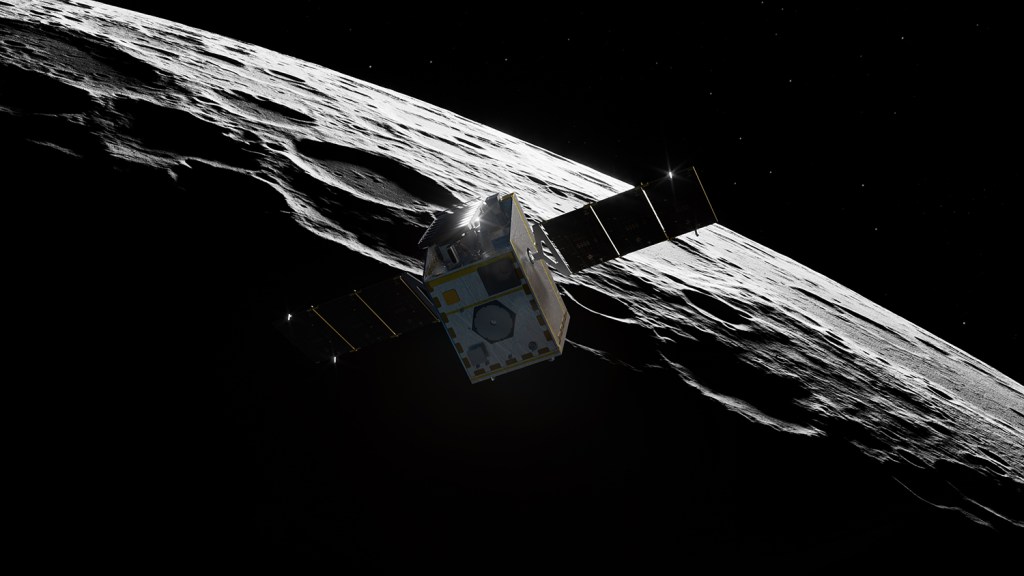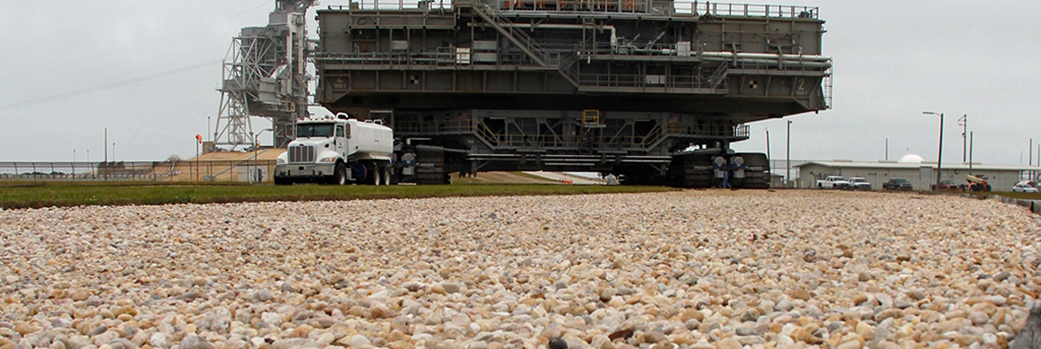From riverbed to crawlerway, the path to space goes through a unique Alabama resource. Alabama river rocks currently pave the path for rockets on the crawlerway at NASA’s Kennedy Space Center in Florida. This 4.2 mile road of rocks is crucial for launching NASA’s missions, specifically the upcoming launch of Artemis I, the uncrewed test flight of NASA’s Space Launch System (SLS) and Orion Spacecraft.
A massive pair of machines called crawler-transporters have carried integrated rockets and spacecraft to Pads 39A and 39B for more than 50 years at Kennedy. Their initial design called for asphalt roads, but engineers quickly encountered issues. Asphalt couldn’t handle the weight of the 6.65-million-pound crawler on its own, much less with the weight of a rocket added to it. The asphalt also proved too sticky and therefore would not allow the crawler-transporter to turn properly, causing damage to its roller bearings. NASA conducted a study to find a material that would allow the crawler to make a proper turn and hold the weight required. The results: river rock.
River rocks are mostly quartz, round and 3-4 inches in diameter, important features for high weight tolerances. They act as ball bearings that allow the crawler to turn with minimal issues. When the weight of the crawler rolls over the rocks, they absorb energy from compaction, helping to reduce the vibration on the surface that could cause damage to any flight hardware being transported. In addition to being easily accessible and affordable, river rock provides the right kind of support the crawler needs.
During the Apollo era, the Saturn V rocket with the Apollo capsule could weigh upwards of 12 million pounds. Due to those enormous amounts of pressure during transport, new rock had to be installed every 10 years. The space shuttle missions were no different. To meet the standards required for the crawlerway, these rocks have precise specifications outlined by the American Society for Testing and Materials. The crawlerway rocks must be laid approximately 8-12 inches thick due to the intense crushing the material will endure. Eventually, the rocks will be crushed to the size of small pebbles that must be replaced. If not, they will begin to trap water in the crawlerway which is a major rolling hazard for the fully loaded crawler.

For the Artemis I mission, the crawler-transporter 2, the mobile launcher, and the SLS super heavy-lift rocket with Orion spacecraft, will weigh in at about 21.5 million pounds. With future missions and an even larger SLS rocket in mind, the crawlerway must be able to support at least 25.5 million pounds for this new era of space transportation. The crawlerway rocks will have to be replaced more frequently than in any other era of space travel.
NASA has a history of buying rocks from Alabama, Tennessee, and Georgia due to their proximity to Florida. The last river rock order placed came from Jemison, Alabama for a major upgrade completed in 2014. Since then, smaller upgrades have been made as needed. In total, the crawlerway currently contains about 70,000 tons of Alabama river rock. Prior to the launch of Artemis II, the team at Kennedy will perform another major upgrade on the crawlerway.
The crawlerway and Exploration Ground Systems team will soon get to exhibit their skills during rollout of the SLS rocket and the Orion spacecraft for the final test before launch known as wet dress rehearsal. The rocket will travel 4.2 miles on the crawlerway from the Vehicle Assembly Building to Launch Pad 39B for the first time, approximately an 8-hour ride with the crawler moving at a top speed of 0.83 miles per hour. For the wet dress rehearsal, propellant will be loaded into the integrated rocket and spacecraft at the launch pad. After the test, the rocket will roll back to the Vehicle Assembly Building where it will undergo final preparations for launch. Then, this spring, the crawlerway will be center stage again, as the integrated SLS rocket and Orion spacecraft roll out for the Artemis I test flight.
















![In Memoriam: Jeff Dozier [1944–2024]](https://assets.science.nasa.gov/dynamicimage/assets/science/esd/earth-observer/2025/2025-in-memoriam/InMemoriam-Dozier1.jpg)
![In Memoriam: Berrien Moore III [1941–2024]](https://assets.science.nasa.gov/dynamicimage/assets/science/esd/earth-observer/2025/2025-in-memoriam/InMemoriam-Moore..jpg)












